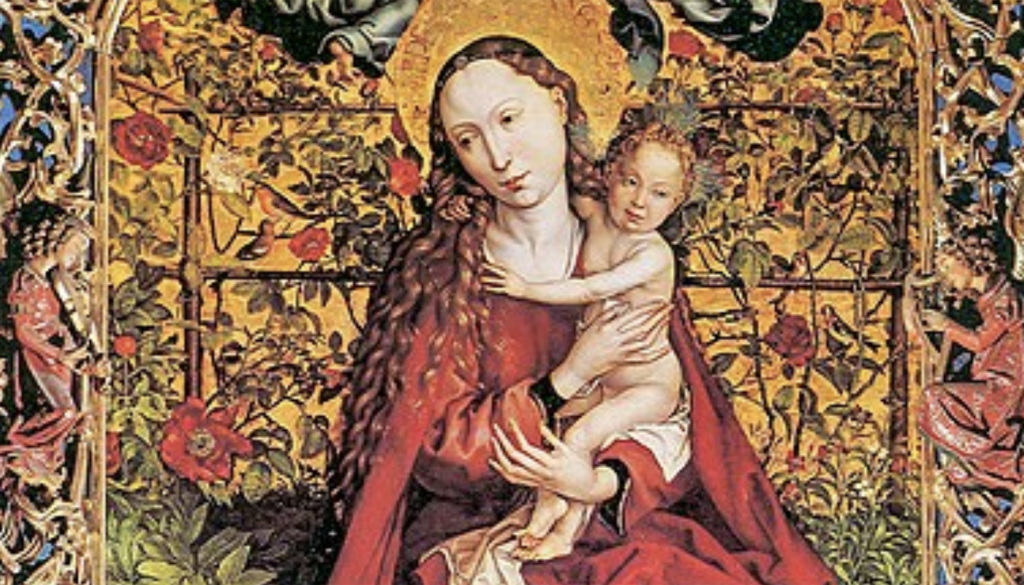Pope Francis gave us an early Christmas gift with “Admirabile Signum” (“Enchanting Image”), his little letter on the ancient custom of setting up Nativity scenes as a way to prepare for the birth of Jesus.
Christians began worshipping at the site of our Lord’s birth in Bethlehem almost immediately. So many were coming, Emperor Hadrian tried to suppress the devotion by building a temple to the god Apollo on top of the site in the year 136.
Today’s Basilica of the Nativity sits on that same site. This Christmas, thousands will once more make pilgrimages there to kiss the ground where Jesus is said to have first been laid.
Saints from Origen and Jerome to Charles de Foucauld and John Paul II have made this pilgrimage. Mystics like Bl. Margaret Ebner and St. Bridget of Sweden have told their visions of the night that Christ was born.
Pope Francis, in his letter, evokes the witness of St. Francis of Assisi, who popularized the custom of reimagining and reenacting the night of Jesus’ birth.
Christianity is not a fairy tale or myth. Our faith is rooted in history and biography, geography and genealogy. The story of Jesus does not begin, “Once upon a time.” Instead, we say that at a specific moment in history, in a specific place, the living God came to live with us.
There is a beautiful materialism at the heart of Christmas.
I don’t mean the crude commercialism and consumerism that we see in shops and advertising at this time of year. But actually, our culture’s commercialization of Christmas is simply a distortion of the wonder-filled materialism of the Nativity.
Christmas shows us how serious “matter” is for God.
What we celebrate is the God who created this material world out of nothing, entering his creation to inhabit it, coming down from heaven to live alongside his creatures on earth.
Our lives start in the womb of our mothers, so that is where God starts in becoming human.
The image of the invisible God, the firstborn of all creation, comes in human likeness, as the firstborn of Mary.
We have heard these words so often that we can take them for granted, but for our Christian ancestors, this was an amazing truth: “And the Word became flesh and made his dwelling among us.”
This sense of amazement is the source of popular piety and customs around the Infant Jesus that we find in almost every culture: the Santo Niño de Atocha tradition from Spain, the Santo Niño de Cebu in the Philippines, and many other traditions.
In this Child, we see our own childhood. But there is more than a material resemblance here.
Every Nativity scene is a “living Gospel,” as Pope Francis says. In the Child in the manger, we see manifested what Jesus came to teach: that we must turn and become like children to enter the kingdom of heaven.
We can see the invisible in what God has made visible, St. Paul said.
Christmas tells us that the things of this world are “sacraments,” signs that point us to our Creator. If we have the right attitude toward material things, they can be instruments that open our hearts and lead us into his presence.
Since that first Christmas, we cannot fail to see the Creator’s image and likeness in every person we meet.
The spirit-filled materialism of Christmas is matched by its transcendent humanism. As all creation must be cherished as the Creator’s gift, so every man and woman must be welcomed and loved, beginning where Jesus began, with the child in the mother’s womb.
Pope Francis urges us to reclaim the tradition of setting up Nativity scenes in homes and public places. I agree. We can never have too many reminders that our God has come to be with us.
My prayer is that we will also rediscover the profound biblical spirit that lies behind all of our “material” Christmas traditions.
We decorate trees because Scripture tells us that when the Lord comes, every tree will sing for joy. We carol and sing hymns because when the Lord comes all the earth will sing a new song and angels in heaven will praise him.
Christmas lights remind us that he is the morning star, the great light given to those walking in darkness, to lead us on the journey of life. Even the tradition of holiday baking can be traced to our Lord’s invitation to taste and see that his promises are sweeter than any honey.
We give gifts to our loved ones at Christmas because in his tender love God has given us the precious gift of himself.
Pray for me this week, and I will pray for you. And I wish you and your family a blessed and holy Christmas.
May the Blessed Virgin Mary be a mother to all of us, and help us to love the God who came to be her Child and become one with us.

